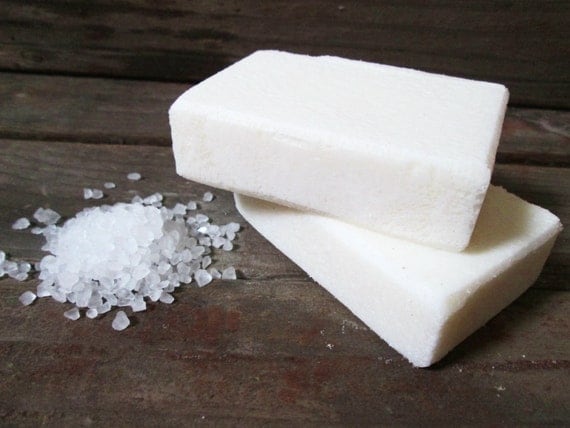Baby Don't Lye
Is there lye in my soap? I receive quite a few inquiries about lye. The answer is no, but it is much more complicated than that. All soap is made with lye. So if someone is telling you that they have a soap that is not made with lye, well now, that's just different kind of lie.
A product is defined as soap by the FDA when the bulk of the nonvolatile matter in the product consist of an alkali salt of fatty acids and the products detergent properties are due to the alkali-fatty acid compounds.
In other words, soap is created when fats or oils are mixed with an alkali, such as lye. A chemical reaction called saponification occurs and soap is the resulting product. Lye is the catalyst in this chemical reaction and a necessary ingredient in the soap making process but soap that is correctly made, contains no lye in the finished product.
We can use a breakdown of the Dove beauty bar ingredients as an example. Why Dove? Mostly because everyone tells me their doctor told them to use Dove. We can't expect doctors to be knowledgeable about all subjects. I once told the doctor that my daughter was allergic to wheat and her reply was that I should give her white bread. Go figure?
Sodium Lauroyl Isethionate - a sodium of the lauric acid ester of isethionic acid (a surfactant)
Stearic Acid - a white waxy, natural acid found in animal and vegetable fat. Most often produced from palm oil.
Sodium Tallowate -saponified tallow (beef fat)
or
Sodium Palmitate - the sodium salt of palmitic acid, derived from palm oil (a surfactant)
Lauric Acid - a medium chain fatty acid found mainly in coconut oil.
Sodium Isethionate - derived from coconut oil, a substitite for animal-derived sodium salts in detergent soap bars
Water
Sodium Stearate- the sodium salt of stearic acid.
Cocomidopropyl Betaine - a synthetic surfactant derived from coconut oil.
or
Sodium C14-C16 Olefin Sulfonate - a detergent cleaning agent (a surfactant)
Sodium Cocoate - saponified coconut oil
or
Sodium Palm Kernelate - saponified palm kernel oil.
Fragrance
Sodium Chloride -salt
Tetrasodium EDTA - a water-soluble ingredient use a chelating agent because of its ability to sequester metal ions and prevent their reaction with other ingredients, also a preservative.
Tetrasodium Etidronate - a chelating agent
Titanium Dioxide - a naturally occurring oxide of titanium used as a whitening pigment.
This product is called a beauty bar, it is not considered a soap even though it has some saponified ingredients. It does not have enough saponified ingredients to qualify as a soap and its cleansing properties are not solely from saponified fats.
Here are the ingredients in our PURE soap. This is a very mild castile soap that has a similar feel to a soap with a moisturizing cream added. This product is true soap and we are not even required to list the ingredient on the packaging, but of course, we do!
Olive oil, Water, Lye or it can also be written, Sodium Olivate, Water
I hope this answers all of your "why lye" questions. But I am pretty confident that very soon someone will be telling me about the newest "no lye" soap they have found.



The sugar ?????
ReplyDeletemau thiet ke biet thu
nha dep
tu bep gia re